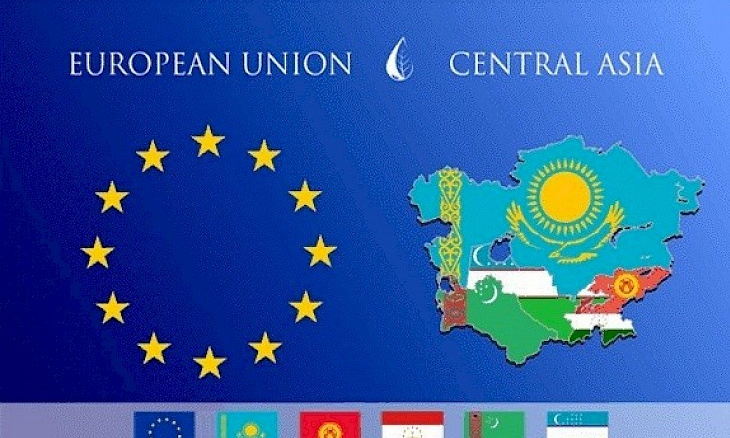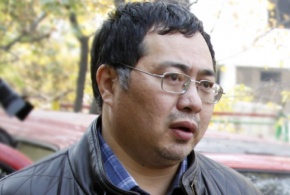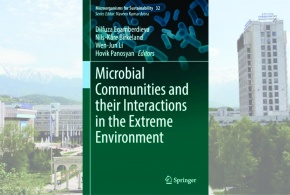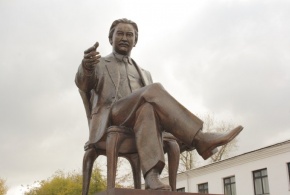
New EU strategy in Central Asia 2019.
The European Union is implementing its permanent Strategic Initiatives in Central Asia.
"The European Union set out today its vision for a Renewed Partnership with Central Asia, updating its strategy for relations with the region, first set out in 2007. A new Joint Communication, adopted by the European Commission and the Union's High Representative for Foreign Affairs and Security Policy, Federica Mogherini, sets out a new vision for a Stronger Partnership with the five Central Asian countries»… EU Commission.
On 15 may 2019, document "The EU and Central Asia: New Opportunities for a Stronger Partnership” was published on the website of the EU diplomatic service (EEAS) and presented in a press release of the European Commission as a new vision of the EU Strategy in Central Asia. This document should be approved by the European Council.
It should be noted that the document itself will be officially presented on July 7, 2019 at the 15th EU-Central Asia Ministerial Meeting, which will be held on July 7 in Bishkek, the Republic of Kyrgyzstan. This is a vision and a joint statement about Opportunities, which is very encouraging.
It is desirable to understand that the EU has been a supporter of stability and development since its formation and is trying to avoid undesirable changes in many areas. Therefore, the document reflects these vectors.
In Central Asia, the EU will now, during the New Strategy, contribute its initiatives and projects on this basis. The situation in Europe itself is very ambiguous and the result is not yet fully known. This is a very strong change in the format of the single EU. The outcome of Brexit is unclear, European politicians retain some hope that the UK may remain in the EU.
Elections to the European Parliament and the possible change of the European Commission Chairman are not as easy and pleasant as it seems outside the EU.
Relations with the US are currently difficult and the goals of the EU and the US do not always coincide. The EU course is in a state of constant individualization and formatting. Europe in this period needs stability and reliability.
It is necessary to take into account the diplomatic service of the EU. Europe is a master of diplomacy. The document could probably be presented in its present form, or it could be amended. Therefore, it is presented as a Joint Statement and Vision of the Strategy at the moment. Based on the vision of the Strategy, some more points can be proposed. The deadline for submission of the document, however, apparently could not be postponed to July. Therefore, the document in the main content and in the vision has been published now. But this is the vision of the Strategy and the basic information on the document.
As you can see, the Office and the Diplomatic Service of the EU show us excellent methods of solving problems in diplomacy and in foreign policy.
The expected spring edition of the Strategy could be postponed to July, taking into account various factors. First of all, it is probably the European Policy and the opportunity to present the document in a calm atmosphere. Elections to the European Parliament, the possible election of a new Head of the EC. In the new and defined composition of the EU Parliament and probably with the new head of the EC, the leadership can successfully present the Strategy.
Brexit until the autumn apparently will not distract the EU leadership.
Central Asia.
The situation in the region is currently stable and no distortions in foreign policy are visible. The course of strengthening and developing relations with the EU is strategic. The different vectors of the foreign policy the most balanced. The presidential elections in Kazakhstan do not address this issue. A positive factor is the process of forming a common foreign policy course group Central Asia 5 and this course is clearly progressive.
The publication of a New EU Strategy will only contribute to positive, political and economic growth.
The EEU, and Russia.
New EU Strategy for Central Asia is related to the EEU, and Russia. Kazakhstan in the integration processes in the EEU, Russia is trying to implement the best projects. Improving integrative lines of the EU have a favorable influence on Eurasian integration in general.
The document on the New EU Strategy in Central Asia consists of several points and blocks. This is presented briefly and clearly in the factsheet on the New EU Strategy in Central Asia. In general, the document gives the impression of outlining the vision of the present and future cooperation between the EU and Central Asia and its main directions.
The main unit consists of three main units:
- Main part.
- More a strong and wide partnership. Investing in regional cooperation.
- Transition to common rules and a more integrated regional market.
- Addressing common problems such as environmental degradation and terrorism.
- Intensification of cooperation with Central Asian partners in order to promote peace in Afghanistan.
- Partnership for sustainability.
- Partnership for prosperity.
- Current support focus.
- Support of education.
The structure of the document looks something like this:
- Historical aspects.
- Description of the collaboration.
- The fact of signing the Improved Partnership and Cooperation agreement between the EU and Kazakhstan and negotiations with the Republic of Uzbekistan and the Kyrgyz Republic was highlighted.
- Aspects of the increasing integration of Europe and Asia.
- New strategy.
- A strong broad-based partnerships.
- Investing in regional cooperation.
- Partnership for sustainability.
- Partnership for prosperity.
- Key dates.
- Focus on current support.
- Support of education.
The publication of the Joint Communication on the New Strategy have to be very interesting in the relations between the EU and Central Asia in the world. After the publication of a number of documents on the connectivity of the EU and Asia, the opening of the EU Free Trade Zone with Japan, meetings of European leaders with the leadership of China, this Strategy should have a very good effect. Even in view of the low popularity of the region in Europe, this will contribute to the growth of positive actions and activity in the Central Asian region.
The official presentation of the EU Strategy in Central Asia in July is likely to consolidate the positive effect.



















 Сот белсенді Ермек Нарымбайдың мерзімінен ерте босап шығу туралы өтінішін орындамады
Сот белсенді Ермек Нарымбайдың мерзімінен ерте босап шығу туралы өтінішін орындамады
 Poverty and misery of …. “terrorists”
Poverty and misery of …. “terrorists”
 SCIENTISTS OF THE KAZNU ARE INVESTIGATING THE PROBLEM OF SURVIVAL OF MICROORGANISMS IN EXTREME CONDITIONS
SCIENTISTS OF THE KAZNU ARE INVESTIGATING THE PROBLEM OF SURVIVAL OF MICROORGANISMS IN EXTREME CONDITIONS
 "Atomic" exam for officials of Kazakhstan
"Atomic" exam for officials of Kazakhstan
 Faculty of Journalism of the Al-Farabi Kazakh National University held an annual scientific and practical conference «Bekhozhinov readings»
Faculty of Journalism of the Al-Farabi Kazakh National University held an annual scientific and practical conference «Bekhozhinov readings»
 Kazakhstan signed an agreement with Russia on the allocation of vaccine against coronavirus
Kazakhstan signed an agreement with Russia on the allocation of vaccine against coronavirus